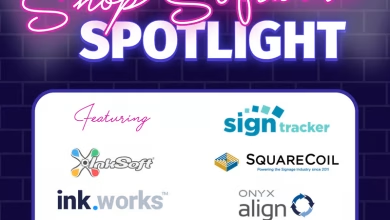Over the last 20 years of providing financing for customization, embroidery, and graphic printing businesses, we’ve seen big peaks and valleys in financing options.
And we’ve experienced firsthand the impact of higher and lower interest rates, economic sentiment, and money supply on how easy it is for a company to qualify for financing — and how that impacts their payments.
In this article, we’re going to touch on financing in this industry, including its unique challenges and opportunities for growth.
Business challenges = equipment financing challenges
2023 is, in many ways, no different from prior years for graphics printing, custom T-shirt printers, sign shops, and similar businesses.
- Technological advancements demand equipment upgrades
- Cashflow continues to be a constant challenge due to inventory/supply and billing terms mismatches
- Seasonal fluctuations can be hard to manage
While these challenges, and many others, are a normal part of this business, they can become key roadblocks to financing your growth.
The impact of technological advances
When a current technology is improved upon — or a new breakout product is released — and you can’t keep up, it can have a negative effect on your business.
For example, in the past, the only way to get a good quality custom t-shirt printed was through screen printing. When digital T-shirt printing with direct-to-garment printers came out, they offered shorter runs and more easily available full-color prints. DTG had a negative impact on many smaller screen-printing shops.
White toner printing had some similar effects on direct-to-garment printer-based businesses. Potential T-shirt buyers are sold on the versatility of the transfers, among other things, which boxes out DTG-printed shirts.
Here the advantage can sometimes go to your competitors, especially startups because they will start with the latest tech.
This is one reason why we’ve seen companies come back to us to finance new equipment multiple times over the years – not just growth of capacity, but the addition of the latest technologies. The good news is that if they have financed equipment in the past and made payments regularly, it can be fairly easy to get a loan for that new technology.
Cashflow and its impact on financing
Cash flow is the movement of money into and out of a business. It’s a measure of the money that the business receives and spends over a certain period of time.
There are two main components to cash flow:
Cash inflow: This refers to the money that comes into the business, usually from selling products or services, receiving payments from customers, or other sources of income.
Cash outflow: This is the money that the business spends on various expenses, such as salaries, rent, supplies, taxes, or loan payments.
A healthy cash flow means that the business has more money coming in than going out, which is called a positive cash flow. This is essential for growth and stability and allows the business to invest in new technologies.
On the other hand, if the business spends more money than it receives, it has a negative cash flow. This can lead to financial problems, as the business may struggle to cover its expenses, pay off debts, or invest in new opportunities.
Banks look CLOSELY at cash flow as an indicator of whether a business can afford to finance new equipment.
The nature of a growing customization and printing business makes cash management a constant issue. Because most customization businesses don’t get paid for their work and products upfront, the cost of materials and labor are paid well before the money is collected.
- Order materials – cash outflow
- Print the order – cash outflow
- Deliver the order – cash outflow
At this point, things diverge depending on the size of the order and client and your business terms, but:
- Collect on delivery – cash inflow
- OR bill on delivery – 30 days until cash inflow
For many businesses, any interruption or delay in any of those steps can cause negative cash flow. If that happens enough, it can impact your credit rating and have a real impact on your ability to get financed in the future.
Seasonal fluctuations
The holiday season is prime time for most people in the customization business. And that rush causes several issues that impact equipment financing.
More cashflow pressure – right before back to school or winter holidays is when many smart customization businesses stock up on supplies and blanks.
Financing volume spike – for a financing broker, that year-end and back-to-school time frames are also a very busy season! The busier your bank or a broker is, the less time they have to work on getting you the best deal or explore ways to improve your chances of qualifying for a loan.
Time pressure – in our experience, many business owners wait until right before or during the busy season to finance equipment. Sometimes they realize the need only after they start getting busy, or they’re only reminded because of the end-of-year Section 179 tax savings push.
In a nutshell, seasonal fluctuations bring about a handful of challenges for customization businesses, especially during busy times like the back-to-school rush and the holiday season.
To stay ahead of the game, owners should be proactive, keep an eye on their cash flow, and start exploring financing options well before peak seasons kick in. That way, they’ll be better equipped to handle the ups and downs of seasonal fluctuations and secure the best financing deals, setting themselves up for success and growth.
The graphics industry faces unique challenges, including constantly evolving technology, cash flow management, and seasonal fluctuations. To stay competitive, businesses must invest in the latest equipment and technologies while also carefully managing their cash flow to ensure financial stability.
Be proactive, explore financing options before peak seasons, watch your cash flow, and keep all this in mind when you’re planning for the future.





